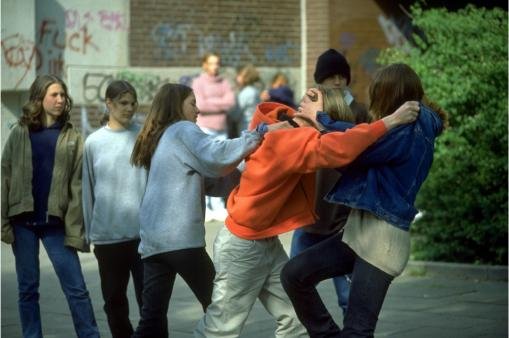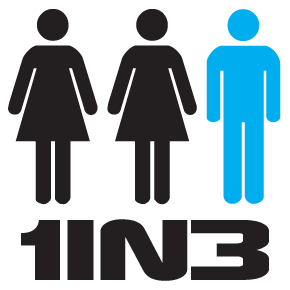Preventing intimate partner violence: a two-way street | Prevention Action

12 January 2012
Over the last three decades, public attitudes to violence between partners have shifted dramatically. No longer is domestic violence viewed as a private family matter.
But despite better and broader understanding, treatment for domestic violence – mainly in the form of protection for battered women and mandated interventions for male batterers – has not met with great success in reducing reoffending.
Why the relative failure of interventions? Because interventions have not taken into account the full spectrum of intimate partner violence (IPV), argue two psychologists from Stony Brook University in New York.
The typical image of domestic violence, in which a man is severely and dangerously violent to a woman, represents an aspect of IPV that is all too real. But the full spectrum of IPV also includes mild and moderate physical aggression that is very common among teens – with around 35% of U.S. high school students reporting that they have perpetrated IPV. This type of IPV also tends to be reciprocal.
This form of early, mutual, less severe IPV calls for a different sort of intervention, argue two psychologists from Stony Brook University in New York. Effective programs start in early adolescence and focus on the actions of both partners, and include other health outcomes, such as healthy relationships, sexual health, and substance abuse.
Moreover, preventing or treating this early IPV may be the key to preventing more severe IPV later on.
When to intervene
The prevalence of both IPV perpetration and victimization tends to peak early, around 17-18 years, and then to decline steadily with age. As a result, effective interventions need to begin early, while there is still time to prevent IPV.
Early adolescence, the time when the first relationships between young people are formed and IPV first appears, seems to be a good time for prevention programs. Some have suggested age 13 for the beginning of prevention programs.
Should both males and females be targeted?
Traditionally, IPV interventions have targeted men, but, the authors argue, this may be misguided because it misses the distinctions between types of IPV. Although sexual IPV is mainly perpetrated by men, and women suffer death and injury due to IPV more often than men, women are as likely as men to perpetrate both physical and psychological IPV.
Low-level IPV among teens and young adults is also different from severe IPV on two dimensions. First, it is mutual; in low-level IPV, both partners tend to aggressive to each other, in contrast to severe IPV, in which men are more often the perpetrators.
Second is the question of motivation: the main reason given by U.S. college women for perpetrating violence was anger at their partner, in contrast to severe IPV, where self-defense is often the reason that battered women hit back.
The evidence suggests that, since the majority of partner aggression is mutual, interventions need to address relationship problems and target both males and females.
Effective intervention: prevention versus treatment
Despite more political attention to partner violence, treatment programs for batterers have proved disappointing. Furthermore, the more severe the violence, the less likely it is to decrease or stop.
Part of the problem is the perception that only male perpetrators need to be treated, and that all male perpetrators can be treated in identical programs – which ignores the two-directional, complex nature of IPV and the different degrees of IPV. For example, the authors warn that it is not appropriate “to place a man who has slapped his wife once into a program with other men who have repeatedly beaten their wives and who often have substance abuse problems.”
A survey across 45 U.S. states revealed that only 10% of treatment programs attempted to tailor the program according to the type of IPV. As a result, treatment has been found to work only 5% better at reducing repeated battering than merely arresting the perpetrators.
Fortunately, there is evidence showing that when the level of violence is less severe and a tailored approach involving both parties in the couple is taken, even a brief treatment can be successful. Notably, just a single two-hour motivational interviewing treatment for college-aged couples with low-level violence in their relationship was shown to reduce IPV and alcohol abuse in a randomized controlled trial.
Prevention of IPV, although still in its infancy, has much more promising results than treatment. In a recent review of 12 IPV preventions programs, two were shown to be effective at reducing perpetration of IPV, particularly when the IPV is not already severe: the Safe Dates universal prevention program for adolescents, and the Fourth R program, which targets at-risk 14-16 year olds.
Interestingly, the two programs that were shown to be successful in changing both attitudes and behavior were longer than other programs. The Safe Dates program included ten 45-minute sessions, and the Fourth R program consisted of 18 two-hour sessions.
Intimate partner violence can be prevented, but intervention needs to happen early, and programs need to acknowledge that IPV is not a one-way street. Effective programs will target both sexes.
References:
O’Leary, K. Daniel and Smith Slep, Amy M. (2011). Prevention of partner violence by focusing on behaviors of both young males and females. Prevention Science. DOI 10.1007/s11121-011-0237-2

